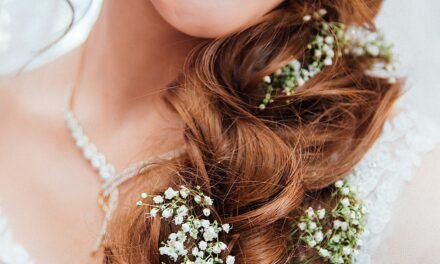
7 Tips to Save Money On Your Big Day

Marriage is one of the oldest and most universal institutions in the entire world, and this tradition is alive and well today. In fact, many brides and grooms in the 21st century are more creative and flexible about their wedding day’s plans than ever before, so a modern wedding can be a truly unique and personal event for everyone to enjoy. But of course, even a small wedding on a modest budget will take a lot of work to plan, and many people will pool their efforts to make the big day possible. It’s just the bride and groom; their parents, best friends, brothers and sisters, and others will all help them prepare for the wedding day, and the bride and groom will also plan out their honeymoon afterward. Hundreds of details must be managed, such as invitations, decoration, food catering, and activities for the reception. There are many topics to cover for such a large event, but here are seven general guidelines to follow for a smoother and more cost-friendly wedding.
The Ring
Before anyone arrives at the altar or calls a catering company, there must be a proposal, typically with jewelry involved, and flowers too, if desired. A traditional scenario is a man proposing to his girlfriend, but today, many same-sex couples are doing the same, and each couple may have their own preferences on who proposes to whom, and how. What is nearly universal, though, is buying an engagement ring, typically a diamond ring. This tradition dates back to early Renaissance Europe, and it is alive and well today. This can be fairly expensive and tricky, but any ring shopper who knows their stuff can get a fair deal. Studies suggest that one in three people going shopping for jewelry are willing to spend $1,000 or more. This is not to say that you have to spend that much, however.
Jewelry is a big topic in itself, but here are some basic guidelines. Bear in mind that diamond rings, and indeed all rings, can vary widely in their style, such as the color, cut, and size of the gem, as well as the design of the metal pieces holding the gem onto the ring. Someone going ring shopping does not have to guess their partner’s style; they can actually go ring shopping with their partner right before or after the proposal to ensure that the ring looks good in everyone’s eyes. Another option is to consult friends or family of your partner and find out what sort of jewelry they like and use that reference carefully. Also, while diamond and gold rings are the norm, many ring shoppers today opt for creative alternatives, choosing silver bands or jewels such as sapphires, rubies, emeralds, and more. Custom jewelry is a major part of today’s jewelry industry, and a customer may outline all the details to a jeweler (and pick up the ring later when it’s ready).
Selecting the Venue

Let us presume that the engagement went well, and now the two partners are planning their wedding. One of the first steps is to select a venue, and this is best done well ahead of time. Some couples may book a venue as much as one year in advance, especially if they are choosing a popular site, or if they are going to marry during a popular time of year for marriages. One year to nine months is a fine span of time between finding a venue and having the wedding there.
What are the options? The classic venue is the church or synagogue that one or both partners regularly attends, and for some wedding couples, this decision is an easy one. But suppose the two partners have very different faiths from one another? They might opt to have two separate wedding ceremonies, one for each faith, or negotiate a mixed-faith ceremony if possible. As for houses of worship, authority figures there should be consulted about what sort of clothing or activities are or are not allowed there. Some houses of worship do not allow women to expose certain areas of skin, such as their shoulders, and some houses of worship might not tolerate noise above a certain level.
The Bridal Shower and Bachelor/ette Parties
Ultimately, it is not required to have a bridal shower or bachelor/bachelorette parties, but these are popular and fun ways for friends to support each other, and for other people to meet and get to know each other better. A bridal shower may be hosted anywhere, from the maid of honor’s residence to the bride’s mother’s residence to a private room at a restaurant. Bridal showers are almost like miniature weddings, in that there will be invitations to send, a dress code, gifts to bring for the bride, activities, decorations, music, catering, and more. The tone, contents, and length of the shower may be based on the bride’s own preferences, and a duration of one to three hours is recommended. Some brides may enjoy a raunchy and wild party with the girls, while others would rather have a quiet and dignified gathering. It is essential for the bridal shower planners to know which route the bride would rather take. During the shower, everyone there may play wedding-themed games that they know (or invent), and make a scrapbook to remember the party by.
Getting Dressed
Everyone should look their best on the big day, and getting all gowns and tuxedos ready means planning ahead. Men’s and women’s fashion are broad and varied, but suffice to say, everyone should take care to coordinate a look that everyone will like. But one thing is for sure: no one should simply guess their tuxedo, gown, or shoe size. Instead, everyone should visit a tailor for measuring and fitting, and even plan ahead for expected weight gain or loss further down the road. For the men, the groom may get a tux for maximum formality, or a suit or even blazer for a slightly less formal look. A man may have either a bow tie or a regular tie. Also, the groom should look distinct from the other men at the party: the groom looks the best, the best man looks second-best, and the groomsmen are in the third tier. All the groomsmen should be dressed the same as each other, like uniforms while looking distinct from the groom and best man. The suits may be black, gray, blue, or brown, and for a warm outdoor ceremony, perhaps a light cream color. None of the suits should be white, however, as the color white is reserved for the bride only.
As for the women, a fairly similar rule applies, though no one will mistake the bride for any of the other women. The bride will wear white (and probably a veil), and the maid of honor may dress either the same as the bridesmaids or have a slightly different look (it may be a matter of preference). The women’s dress color should match the color of the flowers they will carry, and also fit the color of the venue’s general decorations and color schemes. The bride herself will have many options for her own dress, and such dresses come in different shapes based on the body shape of the women who could wear them. Certain styles work better for different figures, and if the bride is not sure, she may consult a tailor to find the right style for her figure. One other note: the bridesmaid dresses may also match the colors of the groomsmen and best man, if desired.
Catering
Whether or not a full meal will be served at the wedding, there is going to be some catering. One thing to make clear: the wedding invitations should specify whether a full meal is being served, or just snacks and cocktails, so the guests will know whether to eat their own meal before arriving. As for catering, the wedding party may browse local caterers that serve the type of food they want, which can range from typical salads and steaks to ethnic food such as Indian food, Mexican, traditional Jewish food, halal Muslim food, or anything else. And of course, the wedding party members should taste-test a caterer’s food to get a first-hand idea of how good the food is. Once a caterer is booked, the invitations will explain what food options are available, and each guest may select one of several options. Any guests with food allergies or dietary restrictions should be accounted for, too. And on a minor note, the bride and groom should make sure that they eat a meal during the wedding. Why should they be reminded to do this? Being the stars of the wedding, they will be constantly occupied with greeting guests and dancing, but they should not do this on an empty stomach. Both the bride and groom should eat a full meal, especially if they are having more than one drink from the bar.
Something similar can be done for the catering, and some venues might have a bar already set up. A bar for the wedding should be fairly standard, and there should be a professional drink mixer and bartender on hand, rather than an amateur wedding guest who volunteers for the job. This duty is best left to someone fully qualified to handle it. Also, care should be taken so that no one gets too heavily intoxicated during the wedding, and a drink maximum can be established to that effect. And anyone who is going to give a toast should not drink too much beforehand, or they will have a sloppy delivery. A small drink or sip to calm the nerves is fine, but delivering a speech while tipsy will not make a good impression.
The Decor
What should the wedding look like? This is a topic where the bride and groom’s creativity and personal expression will be fully shown, and this can make for a charming and unique wedding. Of course, some brides and grooms may choose fairly “typical” decorations, and there is nothing wrong with that since it saves some trouble. But if desired, the wedding party can customize their theme and fully decorate the venue and reception site (indoor or outdoor) however they like. Sometimes, this means using standard decorations, but selecting a unique color scheme based on the time of year or personal taste. A wedding may have a color scheme of gold and green, or vibrant violet and silver, or any other combination. Standard decorations include vases or jars of flowers at the reception tables, balloons, streamers, and bouquets and arrangements of flowers (courtesy of a florist hired in advance).
Seating and Tables
Finally, consider the hardware that makes the reception possible. Where will everyone sit and eat? Some venues may provide their own chairs and tables, and the wedding party may check for that while scouting venues. In some cases, especially outdoor weddings, it is essential to rent (not buy) tables, chairs, linens, and if needed, a large party tent.
The number and size of these items should not be estimated. Instead, the bride and groom may consult the finalized guest list and have a hard figure on how many people must be seated. Now, the wedding party may choose the size, shape, and number of all tables based on that, such as square or round tables, which might seat anywhere from six to 12 people (or even more). Chairs and tables can then be rented in the correct numbers. But what about floor space? The total area of the tables must be factored in, not to mention having enough room for the chairs (and room for people to slide chairs in and out). There must also be distinct aisles between all tables where people can walk. All of this will add up to the total square footage, and knowing that is essential when choosing a venue or renting a party tent. Linens will be rented elsewhere, and only after the tables are booked will the renters know the size, shape, and number of linens to rent. As for the fabric and color of the linens, that is simply a matter of preference, so long as the size is correct.
One final note on seating: not only should guest seating be arranged so that everyone will get along with their table companions, but the elderly and guests with physical disabilities should be factored in, too. Elderly and/or disabled guests should have seats at the outer edge of the table area, for ease of access (and safety). Navigating between tables may be tricky for guests using a wheelchair, crutches, or a walker.
As long as you’re taking the planning seriously, involving your family and closest friends, and are in love with your partner — this will surely be a magical day. Good luck and have fun!


































